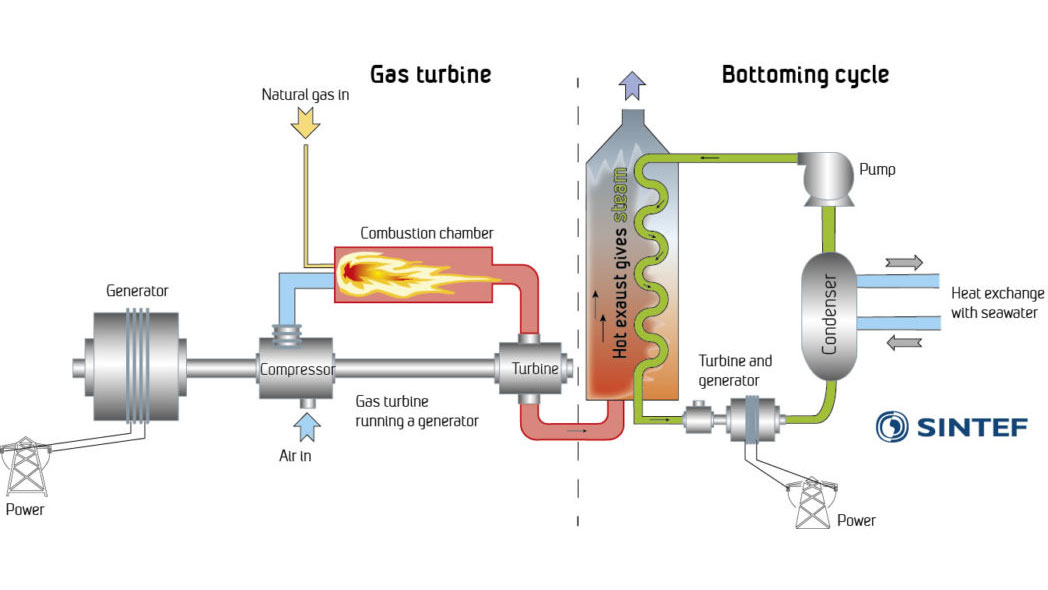Improved energy efficiency is one of the most cost-effective climate measures today in the amount of CO2 removed per dollar invested. The CAPEX (Capital Expenditure) is commonly repaid within 2-6 years due to saved operational costs from less energy use and in Norway reduced CO2 taxes. The COMPACTS project will enable more efficient use of energy from oil and gas production on the Norwegian Continental Shelf – an industry sector with CO2 emissions that make up 29% of Norway’s total emissions of climate gases.
Heat is lost
Eight out of ten kgs of the CO2 released from the platforms originate from the gas-turbines. These provide the electrical power needed for the operation of the platform. However, much useable heat is lost in the exhaust. By attaching a steam bottoming cycle which can utilize the excess heat, the “combined cycle” can produce power from the combustion heat twice. This way the platform’s power demand can be covered by a far lower gas consumption than it has today- and with a CO2 release that is 22 to 30 % lower than the current emissions.
The project aims to do for the oil and gas industry what the car industry has already done.
Too heavy and large
Steam cycles which can be utilized in this way already exist. However they are too heavy and large to be utilized on many platforms. COMPACTS is aiming to do something about this.
The project aims to do for the oil and gas industry what the car industry has already done. Heavy cars with large amounts of steel and large inefficient engines are rapidly being replaced by lighter cars in aluminum and plastics with more energy efficient engines. This is why cars use less fuel than previously, and therefore make less of a carbon imprint. COMPACTS will help the oil and gas producing platforms develop in the same direction.
The COMPACTS project has two part-goals. The first is to reduce the weight of the steam turbine with its accessories by up to 50 percent. Specifically this will be performed in two ways: The first is to reduce the weight of the heat exchanger that recovers heat from the exhaust. Further weight reduction will be achieved by exchanging the steel materials in the framework by aluminum and titanium.
Become standard rather than the exception
The second goal is to improve the operational reliability of the combined cycle. Combined cycle has long been the standard for land-based power plants. If COMPACTS reaches its goals, combined cycle power plants can become the standard for offshore power production rather than the exception which they are today.
COMPACTS is a collaborative project between SINTEF (project manager), NTNU, oil companies and vendors in the oil and gas industry.
Find out more (in Norwegian):
- Teknisk ukeblad: Slik kan supermaterialet bedre effektiviteten i dampturbiner
- Gemini: Gjenvunnet kraft krymper utslipp









Comments
No comments yet. Be the first to comment!